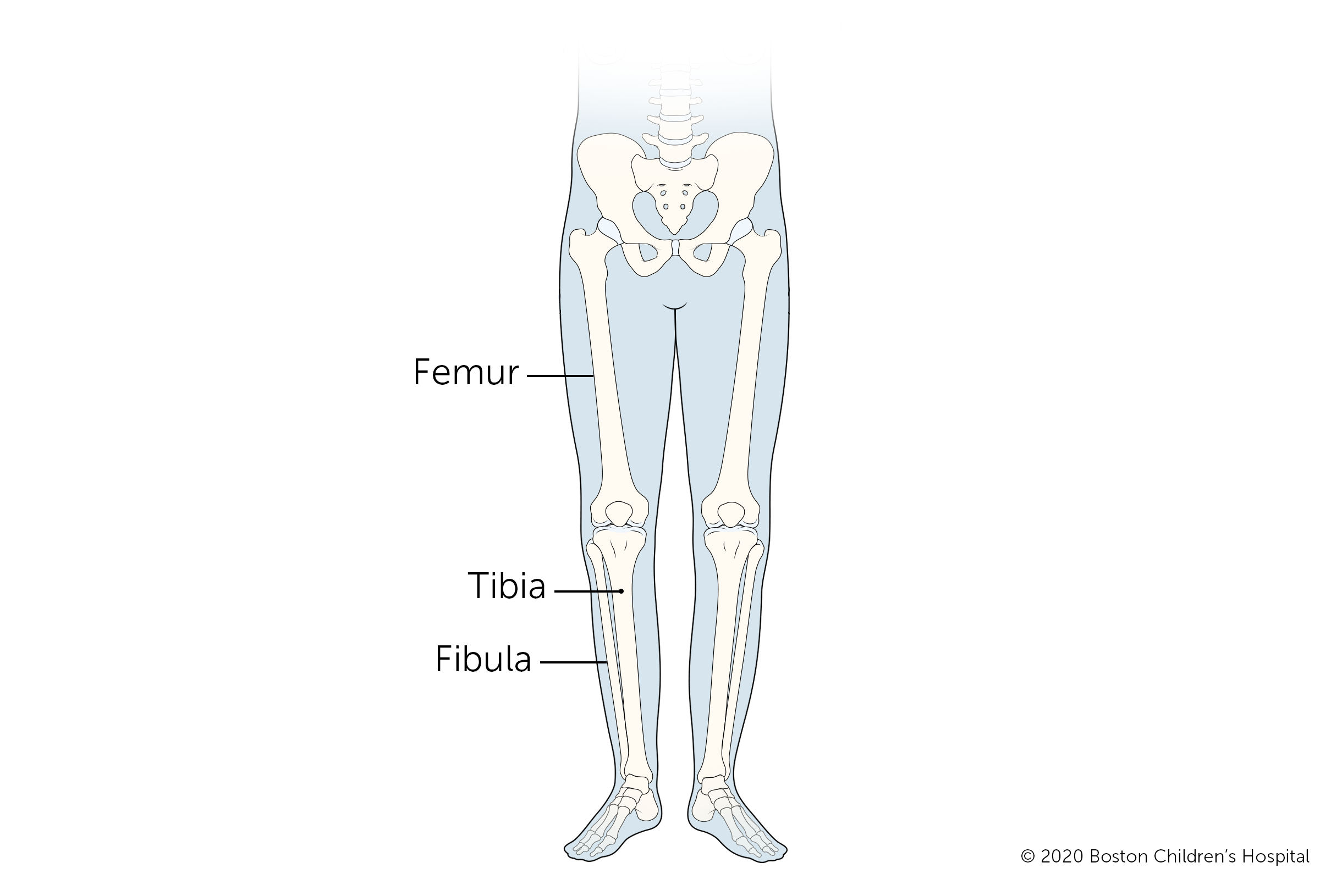Broken Leg | Symptoms & Causes
What are the symptoms of a broken leg?
As it breaks, a bone might make a snapping sound or cause acute pain. Other symptoms of a broken leg include:
- pain when moving or putting weight on the leg
- refusal to walk — most common in toddlers
- pain, swelling, bruising, redness, or tenderness
- noticeable deformity at the painful area
Seek medical care immediately if your child has any of symptoms of a broken bone. If you see the bone poking out through the skin, do not move your child and call 911 immediately.
What causes a broken leg?
Most broken legs are caused by a fall or significant force. When the leg is placed under too much pressure, the bone will break. Common causes include:
- falls or twisting, often associated with ice skating, skiing, or snowboarding
- falls from a height, such as from a trampoline or playground structure
- a direct force placed on the leg while the foot is planted in place, common in football, hockey, soccer, and basketball
Broken Leg | Diagnosis & Treatments
How is a broken leg diagnosed?
Doctors use diagnostic tests to determine if a leg is broken. These include:
- X-rays use invisible electromagnetic energy beams to produce images of bones onto film. This test is usually enough to diagnose the majority of fractures.
- Magnetic resonance imaging (MRI) uses a combination of large magnets, radio frequencies, and a computer to produce detailed images of organs and soft tissue structures, such ligaments and tendons, within the body.
- Computed tomography scans (CT, CAT scan) use a combination of x-rays and computer technology to produce cross-sectional images (often called slices), both horizontally and vertically. This provides greater detail of bone fractures.
- Bone scans are non-invasive imaging techniques that use a radioactive substance to visualize inflammation around bones. Unlike a plain x-ray or CT scan, a bone scan shows bone metabolism and cell activity.
What are the treatments for a broken leg?
Your child’s treatment will depend on the location, complexity, and severity of their broken bone. Your child’s doctor may recommend one or a combination of the following treatments:
- Reduction sets a broken bone in place so it heals properly. This is usually done in an emergency room with medication to manage pain while clinicians align the fracture.
- Splints wrap part way around the leg and are held in place by an elastic bandage. Doctors will usually put a splint on a newly broken bone and replace it with a cast once the swelling has gone down. Splints are also used for minor fractures.
- Casts wrap all the way around the leg to protect the injured area from motion or impact and allow the fractured bone to heal in the correct position. Most broken leg bones require a cast.
- Surgery may be necessary if the two ends of the broken bone have moved too far apart from each other (displaced fracture). A surgeon may insert metal rods or plates and screws into the bone (internal fixation) or pins and bars outside the body (external fixation) to hold bone fragments in place while the leg heals.
- Physical therapy can help strengthen the leg and restore full function after the fracture has healed.
Is it possible to reduce a child’s risk of a broken leg?
You can reduce your child’s risk of a broken leg in several ways:
- Discourage extremely risky activities that put your child at risk of a serious fall or accident.
- Before your child rides a bike or scooter, make sure they have good balance and that the equipment is in good shape and the right size for them. Your child should always wear a helmet while riding a bike or scooter.
- Make sure your child wears proper safety gear during organized sports.
- Encourage weight-bearing physical exercise. This includes walking, running, dancing, jumping rope, and any other activity in which your child’s legs are carrying their own weight.
- To reduce an athlete’s risk of stress fracture, encourage your child to cross train and take time off for recovery.
- Make sure your child eats a healthy, low-fat diet that is high in protein, fiber, calcium, and vitamin D.
- Discourage your child from spending too much time watching TV, playing computer games, or other sedentary activities.
How we care for leg fractures
Every year the Orthopedic and Sports Medicine Center at Boston Children’s Hospital treats thousands of children, adolescents, and young adults with fractures of all complexities. Our pediatric expertise allows for accurate diagnosis of conditions related to the growing musculoskeletal system and development of optimal care plans.
Our Orthopedic Urgent Care Clinic treats patients with orthopedic injuries that require prompt medical attention but are not serious enough to need emergency room care. We offer urgent care services in four locations — Boston, Waltham, Peabody, and Weymouth.



